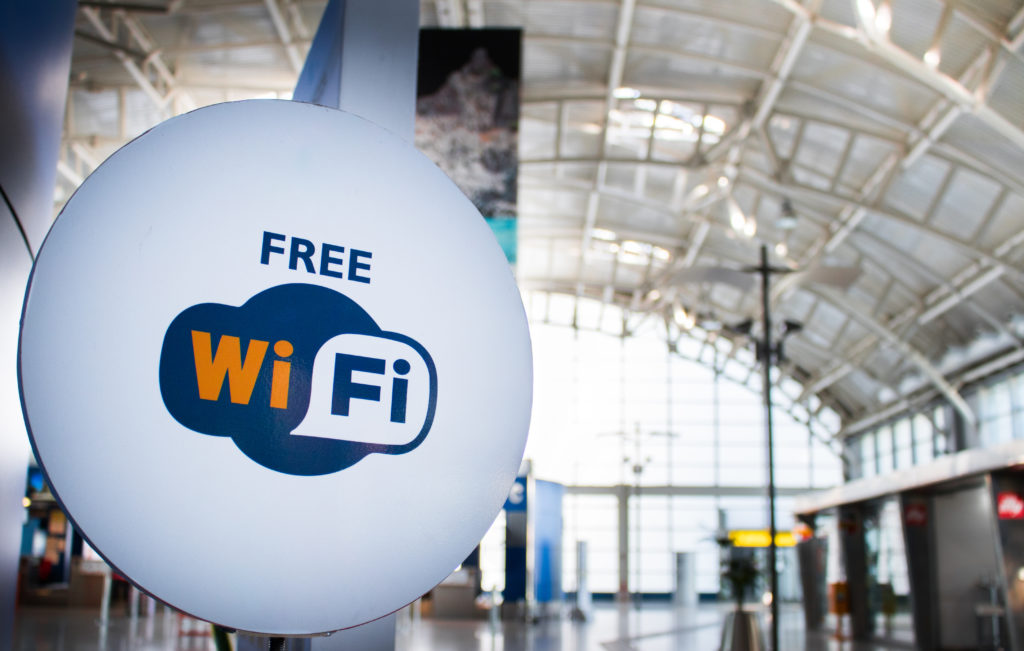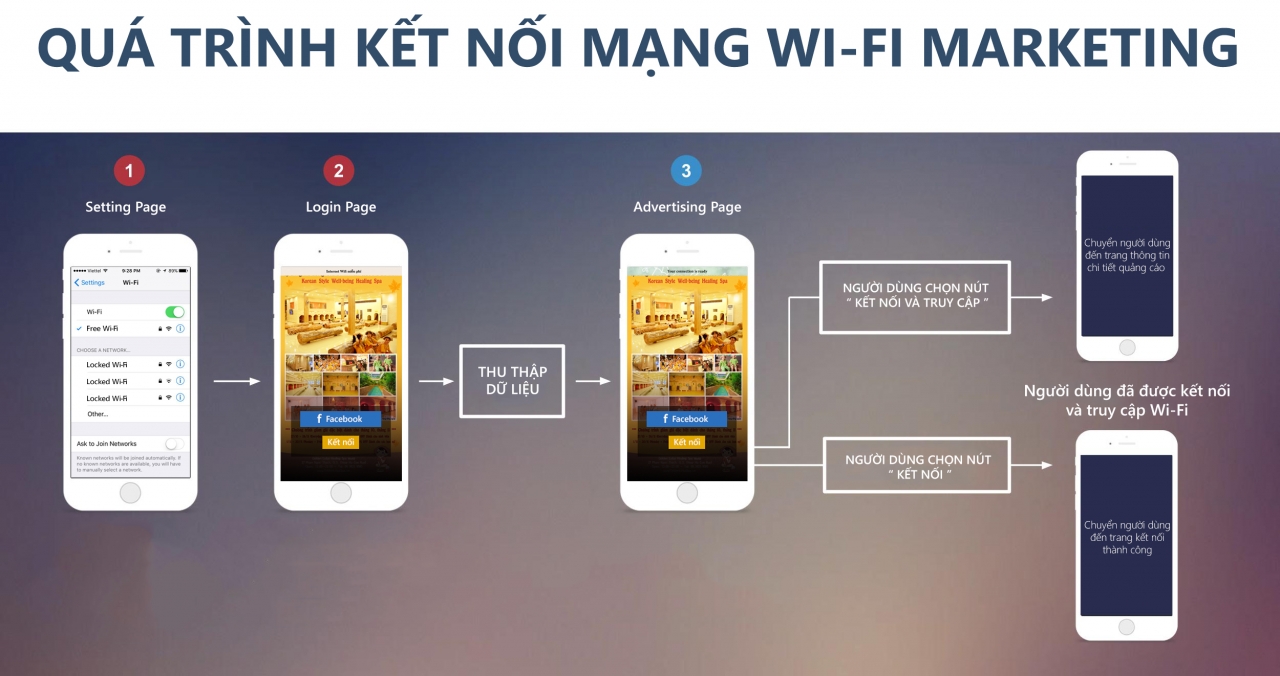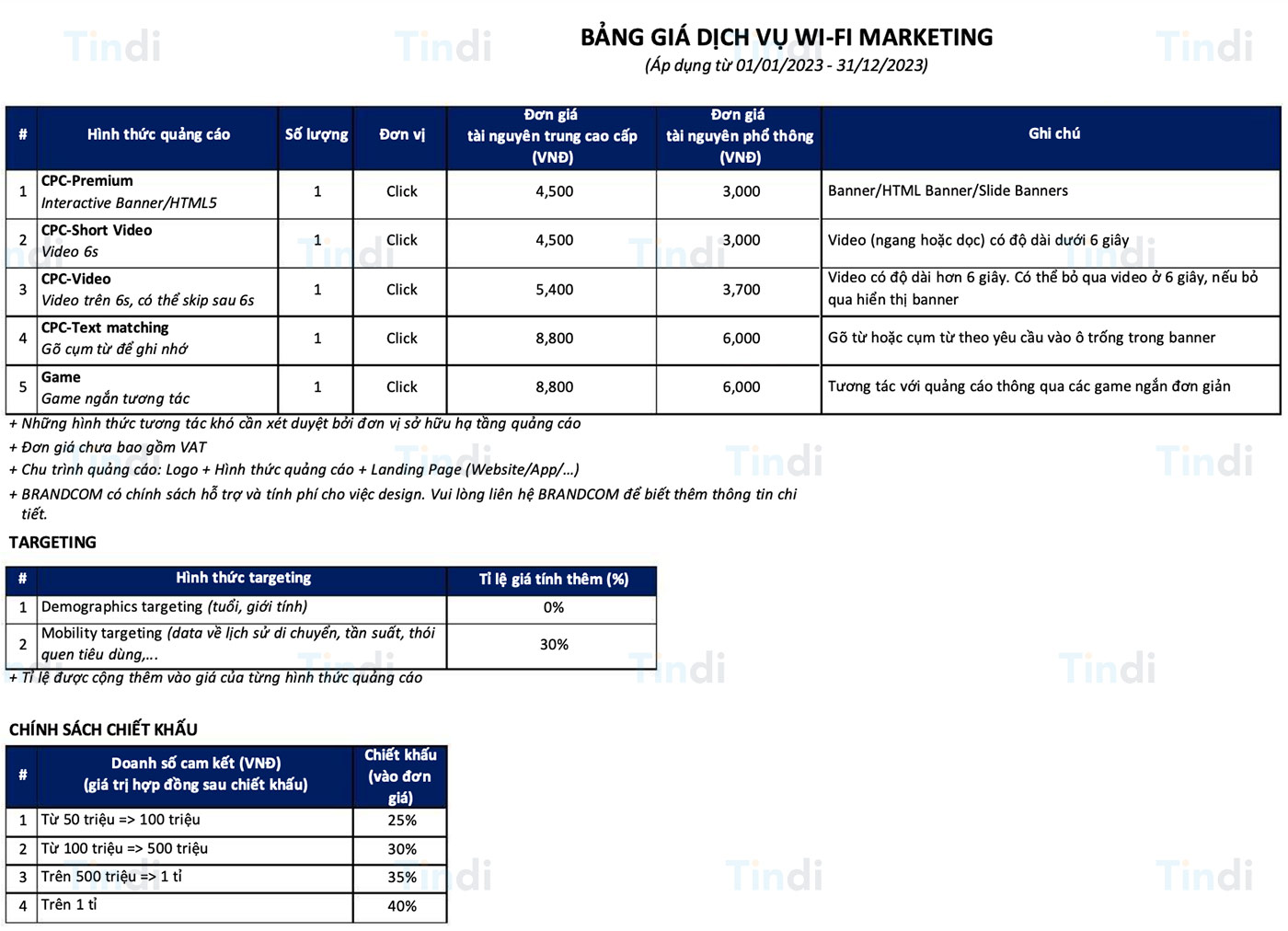Airport wi-fi marketing advertising is an innovative approach that increases connectivity and interaction with customers, providing valuable data for marketing and brand communication efforts. In airports, the user group reached by advertisements is significantly larger, more diverse, and more promising compared to other locations.
1. What is airport wi-fi advertising?
Airport Wi-Fi advertising is a web-based advertising solution that uses browsers to display messages in various formats. Typically, in airports, advertisers convey their messages through banner ads shown via Wi-Fi.
For example, when a user connects to the airport’s free Wi-Fi service, a popup will automatically appear, displaying an advertisement from a business (this ad is hosted on a specific website). Users must interact with the advertisement to access the free Wi-Fi. Interaction can involve clicking the ad, watching a full video, sharing content on social media, or completing a short survey.
The nature of Wi-Fi advertising is a service exchange: users receive free Wi-Fi in return for some form of engagement. This could include focusing on an image, sharing on social media, or providing personal information such as an email address or phone number.
>>> Refer to other advertising formats available at airports

2. Benefits of airport wi-fi marketing advertising
Airport Wi-Fi advertising offers numerous advantages for businesses, including:
2.1. Easy customer engagement
Wi-Fi marketing advertising at airports is one of the best ways to market products and brands, given the high volume of people present. Additionally, waiting for flights can be quite tedious for many, leaving them “hungry” for information. This creates timely opportunities for Wi-Fi marketing to engage users and provide free internet access for entertainment or work.
2.2. Global audience reach
Airports are locations with a large number of international travelers, making them unique compared to other venues. If your product or brand targets international customers, this is an excellent advertising spot. Wi-Fi marketing at airports can quickly introduce your services to global audiences.
2.3. Collection of potential customer data
With Wi-Fi marketing at airports, advertisers can reach a significant number of passengers and effectively target them using the information customers provide before accessing free Wi-Fi.
2.4. Many advertising formats
Businesses have numerous format options for their campaigns, including banners, TV commercials, surveys,… allowing them to align with their business goals and creative campaign ideas.
2.5. Increased brand recognition
To connect to Wi-Fi, customers are required to view advertisements. This ensures that Wi-Fi marketing leaves a lasting impression on customers, helping them remember the brand and its products more effectively.
2.6. Cost-effectiveness
Compared to other advertising methods, where providers cannot guarantee customer engagement, Wi-Fi marketing ensures 100% interaction with customers. This allows you to invest in advertising that delivers tangible results.
3. Steps for airport wi-fi marketing advertising
To effectively reach customers through Wi-Fi marketing advertising, the following steps should be followed:
Step 1 – Access Wi-Fi: Passengers connect to the Free Wi-Fi network.
Step 2 – Logo-In and Brand Logo: The sponsor’s logo for the Wi-Fi system is displayed as the connection process continues.
Step 3 – Advertising Banner/TVC: Advertising banners or other formats (such as TV commercials, surveys, games,…) appear to convey messages to viewers.
Step 4 – Redirect to Website/Facebook: After successfully connecting to the internet, customers are directly redirected to the brand’s website or Facebook page.

4. Forms of airport wi-fi marketing advertising
Airport Wi-Fi marketing advertising includes four popular formats:
- Banner Flash: Quickly displays 1 to 2 advertising banners featuring images, brand/product names, message content, and logos. Users must view the advertisement banner to log into Wi-Fi.
- TVC: A short advertisement clip lasting about 5 to 10 seconds, featuring unique visuals and content that stimulate curiosity and encourage viewers to learn more about the product.
- Data Form: An advertising banner accompanied by a form for collecting customer information, including basic details such as name, age, residence, and email address.
- Text Matching: Customers must correctly enter the brand name to access Wi-Fi.
5. Quote for airport wi-fi marketing advertising
Airport Wi-Fi advertising is typically purchased through four different pricing models:
– CPM (Cost per mile): Pricing is based on every 1,000 impressions.
– CPC (Cost per click): A unit price for each click on the advertisement. Advertisers can purchase a customizable number of clicks per day for management purposes.
– CPV (Cost per view): Applied to TVC advertisements for each video view.
– CPE (Cost per engagement): Costs associated with each interaction with the advertisement.
To provide a clearer picture, Sixth Sense Media offers a sample pricing table for airport Wi-Fi advertising as follows:

Note:
- The pricing table may change based on time, location, and customers’ modification requests. Customers are kindly advised to contact Tindi for comprehensive consultation in order to receive the most reasonable pricing.
- The listed prices do not include VAT.
- Tindi will only accept quotes and bookings when the brand, imagery, and message of the advertisement are not offensive, ensuring compliance with cultural standards and not affecting the wi-fi user experience.
6. Wi-fi advertising services at airports nationwide
Tindi is a professional provider of Wi-fi advertising services at major airports across the country, including: Noi Bai, Tan Son Nhat, Da Nang, Cam Ranh – Nha Trang, Can Tho, Cat Bi – Hai Phong…
We have a fully installed modern WiFi system, ready to provide immediate services. Tindi’s specialists will offer consultation to help investors develop appropriate implementation plans, assist in execution, and provide detailed reports upon contract completion!



